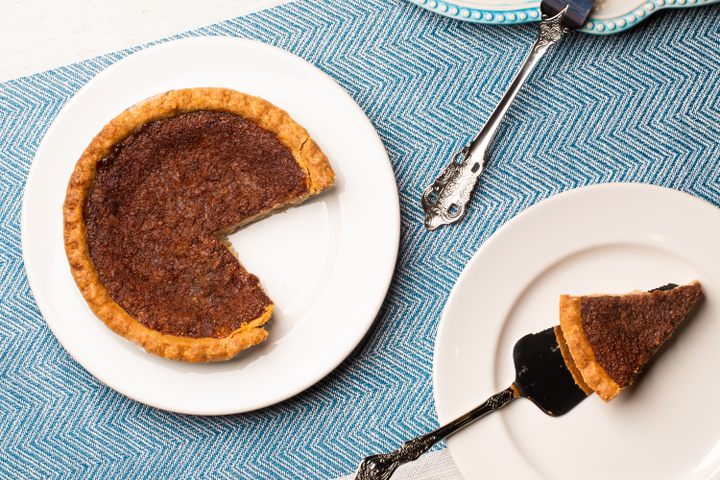

Resurrecting Virginia’s Forgotten ‘Caramel’ Pie
Beloved by Edna Lewis, this plum-based favorite deserves a resurgence.
In January of 1959, a Virginia woman wrote to her local newspaper’s food editor in search of a pie recipe.
“I’ve looked in all my cookbooks for a caramel pie which my husband tells me is made with damson preserves. There just ‘ain’t no sech animal.’ Please see what you and your readers can do to solve this marital difficulty.” The letter was signed “CPJ, Richmond.”
Apparently there was such an animal, and it had once been a popular regional dessert. Prompted by the kitchen mystery, dozens of readers sent in recipes for damson caramel pie (sometimes simply called caramel pie) to the Richmond News Leader. Many of the letter-writers attributed the recipe to their grandmothers or earlier, placing the heyday of the recipe in the 1800s and early 1900s.
The versions were remarkably similar, containing a generous measure of damson plum preserves—a jam with an intensely plummy, almost spiced flavor—blended into a rich base of butter, eggs, sugar, and a dash of vanilla extract. Some included a scattering of cornmeal as a thickener, and others were tarted up with meringue tops. Not one called for actual caramel.
During its heyday in Virginia, the pie was ubiquitous. It was the kind of recipe that was handed down through generations and recorded in family “receipt” books in flowery script, before eventually appearing in hyper-local community cookbooks compiled by church groups and ladies’ auxiliaries.
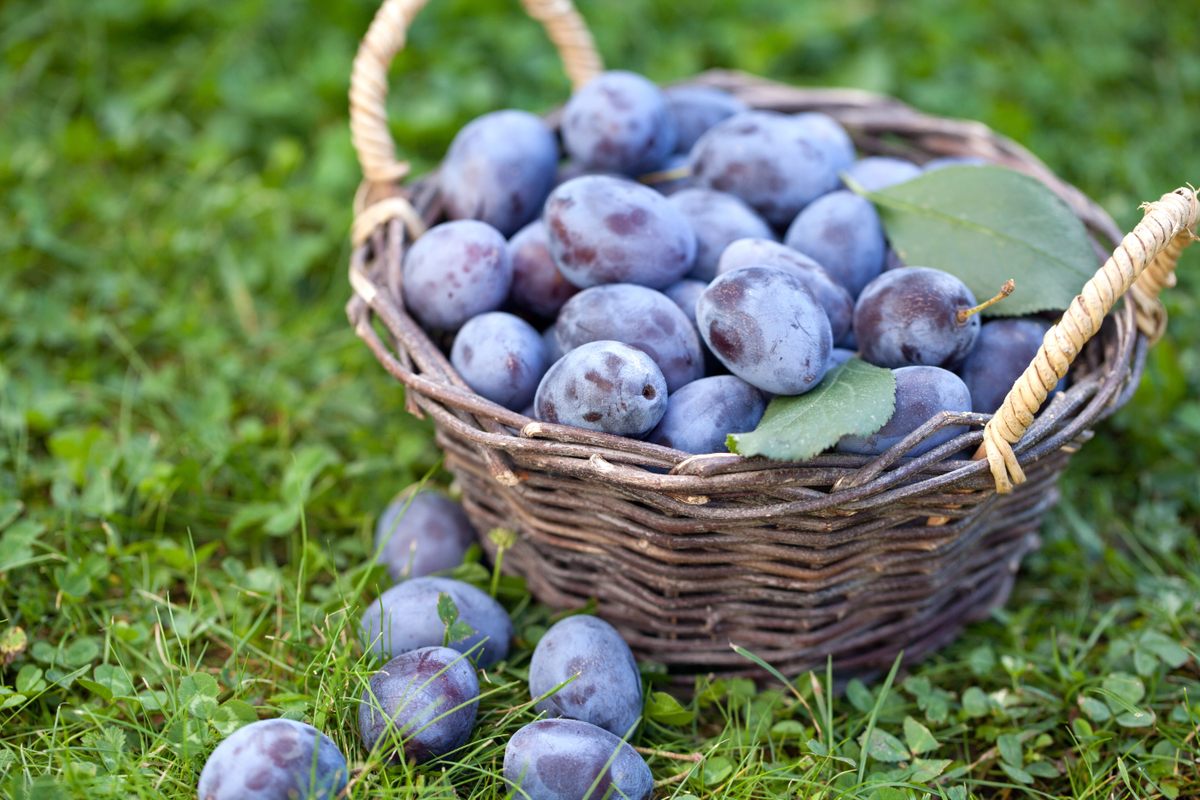
The venerable Edna Lewis, who grew up in Freetown, Virginia, included recipes for both damson preserves and damson pie in her famous cookbooks, which were essentially love letters to her childhood home. In The Taste of Country Cooking, she wrote of her family’s tree: “It was a prolific bearer of hundreds of small plums, the shape of birds’ eggs, of intense navy-blue with a purple tinge. Damson preserves are the first that I really was aware of, mostly because of the attention bestowed on the tree.”
I have a personal connection to damson caramel pie. My grandmother happened to be that food editor who fielded the recipe request in 1959. She had written about damson caramel pies before, in a 1953 piece where she described the fruits as “piquant, hard plums that are now almost extinct in Virginia” and the preserves as a once-important pantry staple in the months when fresh fruits were unavailable. She had also inherited her great-grandmother’s hand-written recipe book from 19th-century Virginia, which contained at least two recipes involving preserved damsons. (I now have this well-worn notebook, along with her reader letters, on my shelf.)
In Alabama, a 1961 Birmingham Post Herald article proclaimed, “it [is] possible to trace a family’s history through the kind of food it eats. For instance, a liking for Damson pie indicates Virginia ancestry; a preference for blackberry jam cake, forbears from Kentucky or Tennessee.”
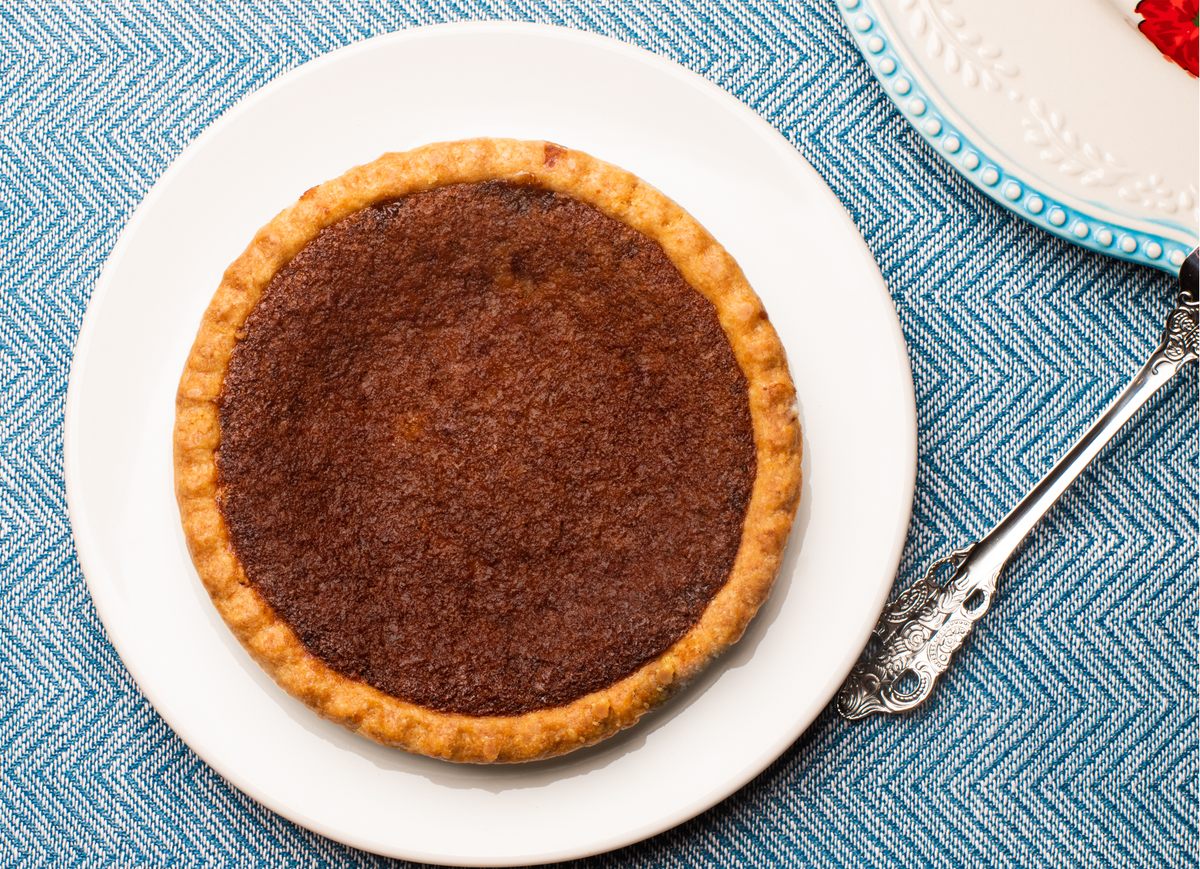
Today, however, most people in the United States, and even Virginia, would be hard pressed to even tell you what a damson is, much less offer a recipe for its signature jam pie.
To explain the rise and fall of the pie, one needs to examine the history of the damson. The fruit is classified as a subspecies of plum, Prunus insititia, which some botanists have argued belongs in a category of its own. In Damsons: An Ancient Fruit in the Modern Kitchen, Sarah Conrad Gothie writes that the fruit’s supposed roots lie in a region near Damascus, Syria, where it still grows, and that the name derives from an older moniker, damascene.
Although the era of their exact arrival to Europe is unknown, archaeologists have excavated damson plum pits in Germany that date as far back as 4060 BCE, and Gothie notes that damsons have grown in England “since the island’s earliest recorded history.” Later, the English brought this orchard favorite to the original American colonies, where it thrived, eventually spreading westward and throughout North America. Early American cookbooks contain methods for preserving the fruit, including spiced pickles, condiments, and jams.
There’s a reason that most recipes involve cooking or pickling the fruit. A raw damson, with its inky hue and silvery bloom, is less luscious than its looks might suggest: Bite into one and you’ll get a sour, astringent mouthful. Cooked gently with a quantity of sugar, however, the fruit’s flavor unfolds into something deeper and more beguiling. Its flavor profile, plus its high pectin content, also make it well-suited for preserving, or “putting up.” Damson caramel pie was a product of the rhythms of this seasonal preservation and likely evolved from English “cheesecakes”—later called chess pies—which kept well in pre-refrigeration times.
In some European countries, damsons have remained an essential ingredient of spirits (such as Czech slivovice) and jams; in the U.S., not so much. David S. Shields, a food historian and the author of Southern Provisions: The Creation and Revival of a Cuisine, points to an outbreak of fire blight that wiped out many damsons in the South. Virginia newspapers from the late 1940s through the 1950s are peppered with anguished write-ins from home gardeners whose fruit orchards were getting hit; 1954 seems to have been an especially bad year. Gothie, the author of Damsons, adds that another disease, black knot, tore through damson orchards in the Midwest, where a 1922 issue of the Indiana Farmers’ Guide noted that “the ravages of black knot and a general lack of interest has reduced them to a few families.”
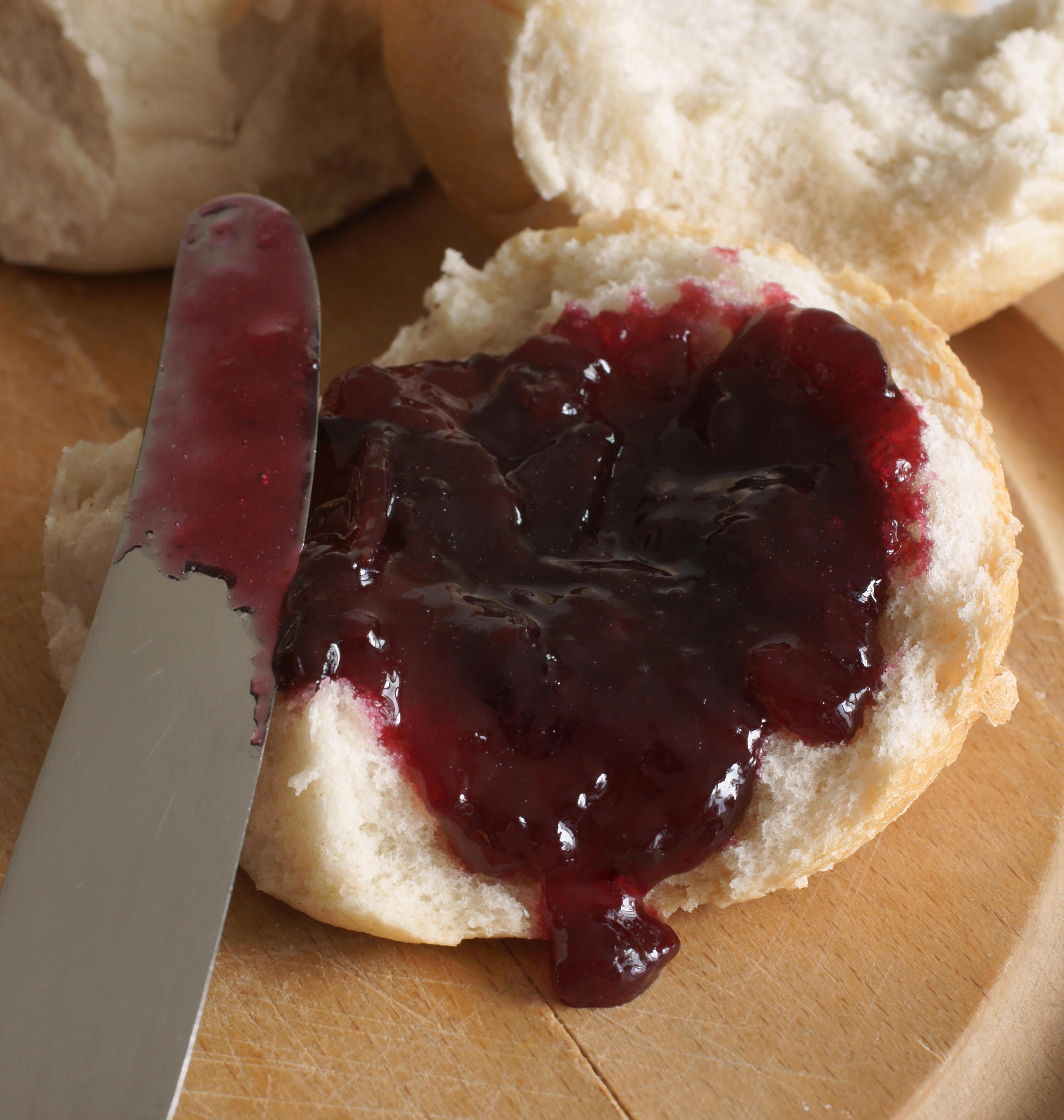
While neither of these pathogens wiped out the trees completely, additional factors were eroding their presence around that time. Gothie explains that because the fruits are so small, growing on brittle stems, they are hard to harvest mechanically and “not too great for commercial production.” In the early part of the 20th century, other fruits became cheaper to grow on a large scale, and fresh fruits could be imported out of season. Preserving fruit for one’s pantry was no longer a necessity, and damson caramel pie was, at its heart, a country pie born of that need.
But the dream may still be alive for the damson, and for its namesake pie. In pockets of the United States—including Virginia—the fruit has quietly hung on in multi-generational family orchards. Damson trees have also sprouted up in wild spaces, including in Idaho, where a savvy forager might fill a basket. In the U.S. you can find damsons, during a brief late summer window, in farmer’s markets in California, the Midwest, and other regions. A foray into the Facebook forum North American Fruit Explorers (NAFEX) reveals a crop of enthusiasts growing and propagating them. With a recent, renewed appreciation for heritage plant varieties, grandmother recipes, and craft production, damsons just might be poised for a revival.
Gothie believes this is overdue. “For those tasting them for the first time, they’re something new, and for those who grew up with them, they are powerfully nostalgic,” she says. In addition to tending a few trees of her own, she drives from her home in Pennsylvania to an orchard in Virginia every August to buy the fruit in bulk, then freezes and cooks with it throughout the year.
Damson pies seem to inspire a small but avid fandom among those in the know. David Shields, another damson aficionado (and overall booster of heritage Southern plant varietals), baked a version of the caramel pie with jam for a “rare pie” tasting event he hosted among neighbors. He describes it as having “a distinctive flavor unlike any other fruit pie I’ve eaten.” Of all the pies on offer that day, he says, “Everyone agreed the damson was the most remarkable in terms of flavor.”
Daniel Perry, proprietor of Jam According to Daniel in Charlottesville, Virginia, says that a taste of his damson preserves seems to trigger “a really Proustian thing … I get many great stories from customers about their memories.” He told of how one customer, a 90-year-old blind woman, tasted his preserves from a jar her daughter had bought and mistook them for a forgotten jar of her own.
If you know where to look, it’s possible to pick up a jar of quality jam and re-create an old-fashioned damson caramel pie in your own kitchen. It’s worth it for the rich, buttery smell that billows from your oven, and the resulting pie is silky smooth and sweet, suggestive of caramel but with something deeper and more complex, subtly fruity with a whisper of spice. A bite may conjure a sense memory you can’t quite place, even if you’ve never tried it before. Without a doubt, CPJ and her husband would be pleased.
Damson Caramel Pie Recipe
Adapted from 1959 reader letters to Mildred Williams at The Richmond News Leader
Ingredients:
6 tablespoons (3 ounces) unsalted butter, softened
1/4 cup sugar
3 eggs
1/2 cup damson preserves*
½ teaspoon vanilla
1 unbaked 9-inch pie crust (store bought or homemade, see below)
Instructions:
- Preheat the oven to 350° F (177° C). In a medium bowl, cream together the butter and sugar with an electric mixer until fluffy and light yellow. Beat in the eggs one at a time, then add the damson preserves and vanilla and beat for another five minutes.
- Take out your pie crust and prick a few holes on the bottom using the tines of a fork. Pour the filling into the crust and place on the middle rack. Bake for around 30 to 40 minutes, rotating the pie midway through baking for evenness. The pie is done when the filling is set but the center jiggles ever so slightly. Let it cool for at least a half hour or so before serving (it will firm up more).
* The English brand Wilkin & Sons makes a decent damson plum preserve. You can also mail-order from smaller producers such as Beth’s Farm Kitchen (Hudson Valley) and Jam According to Daniel (Charlottesville, VA).
Pie Crust Recipe
If you’d like to make your own crust, try this recipe for a 9-inch crust, adapted loosely from The Four and Twenty Blackbirds Pie Book.
Ingredients:
1 ½ cups all-purpose flour
1 tablespoon sugar
¼ teaspoon salt
1 stick (4 ounces) cold, unsalted butter, cut into small pieces (roughly ½- inch pieces)
½ cup ice water (or less)
Instructions:
- In a food processor, mix the flour, sugar, and salt. Add the butter and pulse into the dry ingredients until the largest pieces are pea-sized. Drizzle in the water, pulsing a bit at a time, until the dough starts to clump together into a shaggy mass but has not fully come together in a ball. You may not need the full amount of water. Alternatively, you can do this by hand, using your fingers to pinch and work the butter into the flour.
- Pour the dough onto a floured surface and press it together gently into a flat disk. Fold it over a few times onto itself, then press it into a disk shape again. Wrap it in parchment or plastic, and place in the refrigerator for an hour or so to rest.
- Once dough has rested, allow it to soften a bit at room temperature for 20 minutes or so, until it is workable but still cold and firm. On a floured surface, roll the dough out evenly with a floured rolling pin, working from the center outward to the edges, occasionally rotating the dough a quarter turn. Once the dough is wide enough to fill a 9-inch pie pan and cover the rim, pick it up and gently lay it into the pie pan, taking care to fit it into the edges. Trim any excess dough with kitchen scissors and crimp or flute the edges as you like, using your fingers or a fork. Cover, and allow to firm up in the refrigerator for around a half hour, or until you are ready to bake.
Gastro Obscura covers the world’s most wondrous food and drink.
Sign up for our regular newsletter.



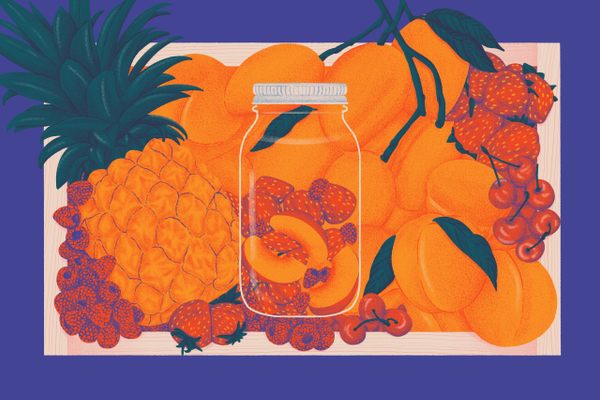
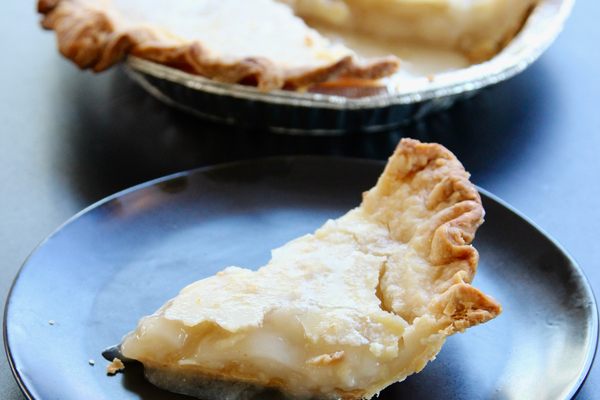



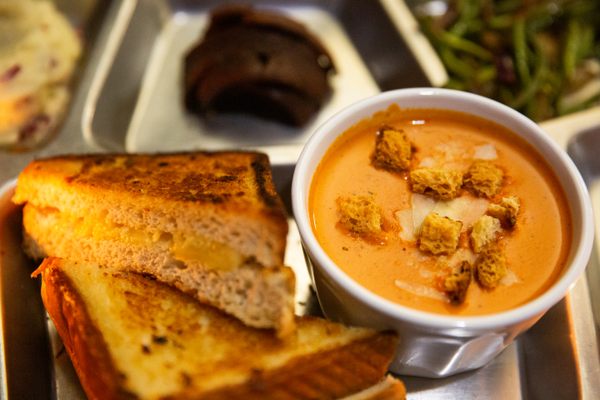
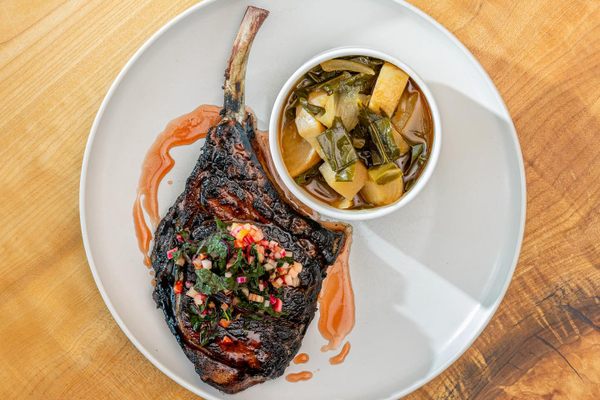




Follow us on Twitter to get the latest on the world's hidden wonders.
Like us on Facebook to get the latest on the world's hidden wonders.
Follow us on Twitter Like us on Facebook